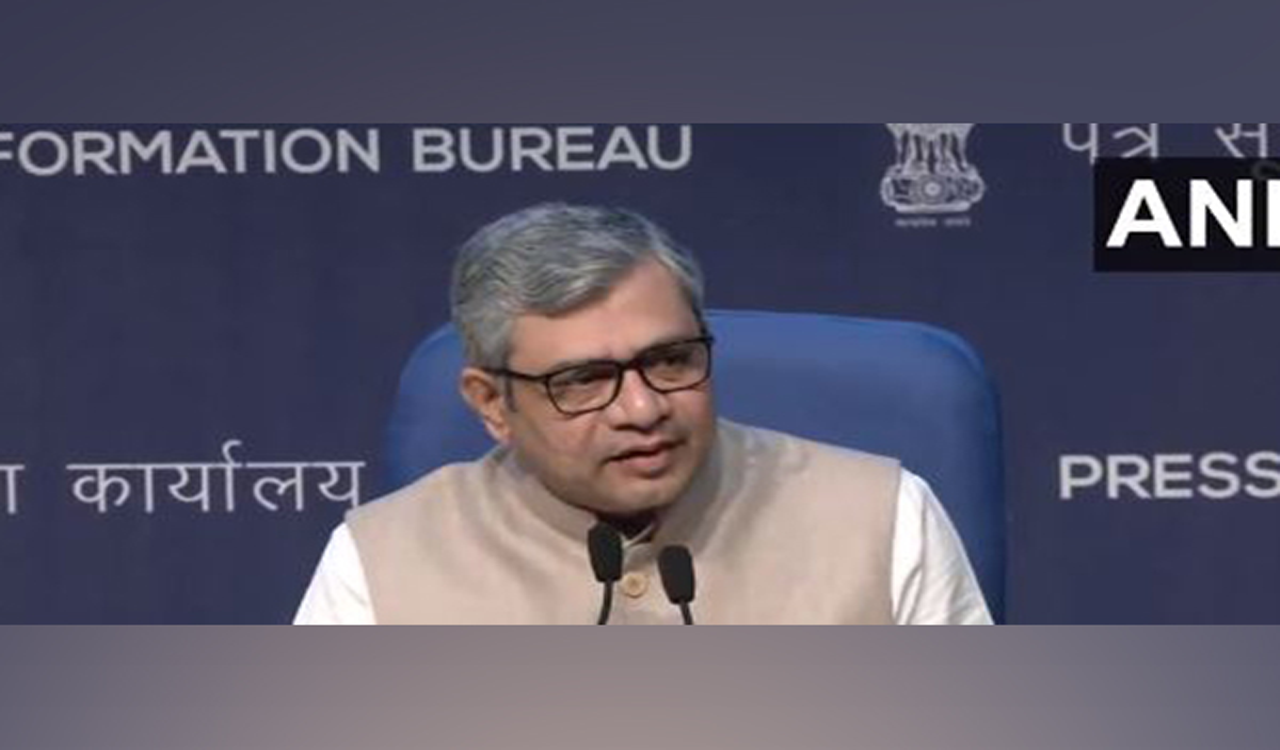Leaveism — leaves taken to complete office work — deteriorates employees’ work life and affects their mental health
Published Date – 29 February 2024, 11:59 PM
By Krishna Hingane, Dr Moitrayee Das
Long gone are the days when people used to work to live. We now live to work. This manifests in piled-up vacation days, working from home when sick and attending work calls during vacations due to the fear of missing out (FOMO).
A Deloitte report found that 51% of employees were working outside contracted hours and 36% were taking allocated vacation time off when they were unwell (Employee Well-Being Survey: Identifying the Path to Success, 2021). Ian Haskett coined the term ‘Leaveism’ to explain this behaviour. Leaveism refers to leaves that are taken to get personal work done, leaves that are taken to complete accumulated professional work, mandatory leaves that are taken on sick days to recover and not to relax and vacation days that feature work calls and tasks (Hesketh & Cooper, 2014).
The Covid-19 pandemic and the all-consuming dominance of technology are commonly attributed as the reasons behind this. The former introduced remote working and flexible timings, brought together home and office and blurred the 9-5 boundaries. In addition to this, technology acted as a facilitator for staying in touch with others every minute, despite the geographical distance.
Overload
A CIPD (2023) survey revealed that 63% of HR managers were aware of leaveism and that organisations have started taking steps to address it. However, the improvement appears to be slow, with only 35% of organisations taking solid steps to mitigate leaveism. We cannot ignore the fact that organisations, and even governments, like Belgium, Portugal, France and Italy, have introduced restrictions on contacting employees during their time, which have the potential to reduce leaveism (Kelly, 2022). Employee guidance, causal analysis, change in organisational cultures and policies limiting technology use after-hours are a few examples. Despite this, why is leaveism still prevalent?
One possible reason could be the traditional Indian beliefs that influence our organisational culture and work life. Since ancient times, treating work as worship and working with utmost dedication has been prevalent. While this leads to increased motivation and commitment, excess of it leads to overload. Consequently, employees tend to work beyond stipulated hours which may lead to a rise in leaveism and presenteeism.
Indian culture also emphasises respect for authority. The practice of referring to managers and supervisors as ‘sir’ or ‘madam’ still exists in many workplaces. This respect fosters good interpersonal relations but also increases the fear and anxiety among the employees. It might result in them not taking leaves, being available whenever the manager calls and adopting the ‘Yes, sir’ mentality.
Globalisation
Additionally, globalisation continues to contribute both positively and negatively to this situation. According to the European Parliament (2023), globalisation has led to increased unemployment of low-skilled workers. This job insecurity has reared its head in India in other industries as well. With India leaning towards a capitalist economy under the influence of Gautam Adani and other international companies, employees face increased competition (Tripathi, 2023). Business tycoons like Narayana Murthy are asking the workforce to clock 70 hours (Vijayaraghavan, 2023). Such unstable conditions, coupled with opinions from influential personalities, force the employees to work harder than ever to sustain their jobs. Sarah Jaffe talks about this rat race in her book titled ‘Work Won’t Love You Back’. She elaborates on how the growing aspirations and power struggles among businesses trickle down to the employees and force them to believe that they love their jobs even though it is gradually dominating their lives in a negative way (Dockterman, 2021).
On the other hand, there are employees in secure jobs who are stuck in the rut of leaveism unknowingly because their motivation of being the ‘best’ employee and leader drives them to prioritise work at all times. Among all of these, some employees wish to prioritise personal time but are unable to do so due to a lack of organisational policies and awareness.
Cherish your Time
Here are some measures that can be taken on a personal level to promote and cherish your time:
Keep track of your working hours: The Indian law stipulates a maximum of 48 working hours per week (Paycheck.in, 2019). Beyond that, one can only be compelled to work if overtime benefits are provided. This often translates as the 9 to 5 schedule in workplaces which leaves adequate time for employees to relax and pursue other hobbies. This provision empowers the employees to say ‘no’ to managers and meetings that exceed decided work hours without facing any legal repercussions.
Practice saying ‘no’: The ‘Yes, sir’ mentality contributes to undue pressure on the employees. This not only leads to burnout and job stress but can also hurt one’s personal life. Many of us end up working at home, on weekends and even vacation days. Some of us even take a day or two off to finish the piled-up work. A potential solution to this is ‘respond, don’t react’. Whenever a task beyond your fixed ones comes up, think about the time it would require along with your other tasks and personal commitments.
Delegate tasks often: According to research, leaders should ideally delegate three types of tasks (Sanfilippo, 2023). Activities that don’t impact your growth like accounting, maintaining Excel sheets and technical tasks. One should delegate tasks that drain them of passion. Not everyone loves every responsibility in their role. However, someone else might love them, which is where delegation is a win-win. Lastly, delegate tasks which the others can perform better than you. This tactic saves time, allows one to focus on tasks that interest them and frees up time for personal activities.
Lead by example: Employees and team members often look up to the leader and, consciously or unconsciously, imbibe their traits into their work behaviour. Leaders have been employing this practice successfully to cultivate positive workplace behaviour. However, they might have also contributed to the growth of leaveism in their team. They lead by example when they drown themselves in work. In such conditions, leaders could benefit from taking vacation days more often and avoiding work calls after hours.
Use technology wisely: A feature of leaveism is attending to work tasks on leave days. However, new technologies provide excellent solutions for this. For instance, distracting work emails can be redirected easily by using the ‘out-of-office’ feature which instantly sends a reply stating that the receiver will not be able to attend to the issue at the moment. A German company called Daimler has gone a step further and introduced a feature that erases all emails in an employee’s inbox that are received while they are on leave (Gibson, 2014). Another way to prevent work meetings while on leave is blocking your office calendars. Companies can also introduce features that automatically redirect work calls and emails to an alternative person when employees are on leave. Leaveism has been a pertinent issue in the Indian corporate world. It gained importance gradually after the pandemic. However, leaveism will continue to deteriorate employees’ work life and significantly affect their mental health. This would have implications for organisations since it leads to reduced productivity due to dissatisfaction and stress. Despite this, Indian companies are yet to take a firm stand on this. Thus, employees need to make a move towards combating leaveism for the sake of personal and professional well-being.

Krishna Hingane is Undergraduate student and Dr Moitrayee Das is Assistant Professor of Psychology at FLAME University, Pune
![]()






















